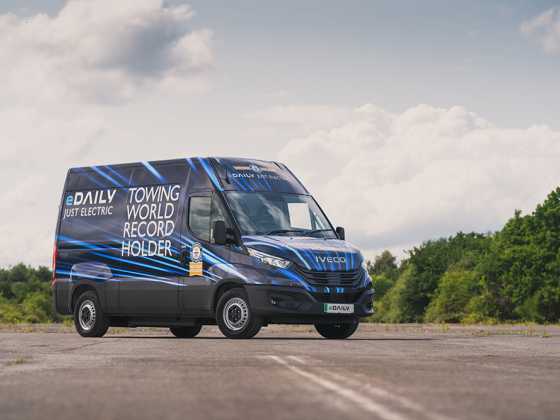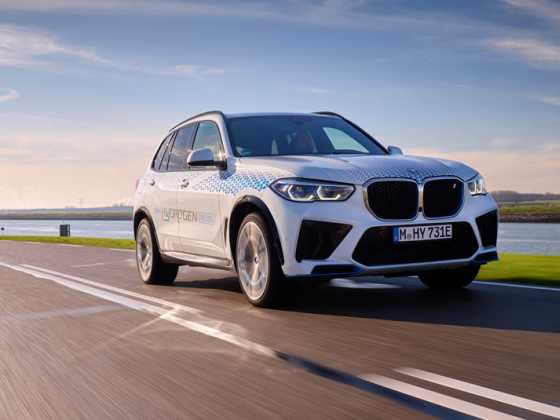Toyota Professional Proace Electric

Building on the success of its ICE-engined light commercial family, Richard Gooding finds that Toyota’s addition of a proven, all-electric powertrain and platform boosts the Proace’s practical appeal
What is it?
The current Toyota Proace has been around in combustion-engined form since 2016, the van a collaboration between the Japanese manufacturer and the Stellantis group. A cousin of the Citroën Dispatch, Fiat Professional Scudo, Peugeot Expert and Vauxhall Vivaro family of LCVs, the Proace first adopted the all-electric powertrain from these vans in 2021. A single 100kW motor choice is available, with either 50kWh or 75kWh battery packs. As with its smaller Proace City Electric van which arrived on the market following a similar collaboration, the Proace’s battery pack is mounted under the floor, so the e-LCV’s 5.8m3 load capacity is the same as that of its diesel-engined counterparts.
How practical is it?
Toyota’s combustion-engined versions of the Proace come in a choice of Medium (M) and Long (L) wheelbase models, but the Japanese manufacturer has kept things simple with its all-electric mid-sized van. Toyota’s market research states that the ‘M’ size of van is the most popular in its ICE family, so the electric model is solely available in this configuration. However, that doesn’t mean it doesn’t offer practicality to suit those operators looking to decarbonise their LCV fleets.
With a wheelbase of 3,275mm and 1,899mm height, the 75kWh Proace Electric Medium tested here has a maximum gross payload of 1,000kg, the 50kWh model offering 1,266kg. Thanks to the standard Smart Cargo load-through bulkhead system which provides an additional 1,160mm of load length – while still accommodating two people in the cab – the Proace Electric can carry up to 5.8m3 of cargo. Overall cargo load length with Smart Cargo is 3,674mm, with a maximum height of 1,397mm and a width of 1,636mm. The overall exterior length of the van is 4,959mm.
A trio of Euro pallets can be swallowed with ease, loading made easy by a sliding door on each side – with a maximum opening height of 1,241mm and width of 932mm – and rear doors that open up to 180 degrees. A steel bulkhead with a window and grille keeps you and your cargo separate from each other, and both 50kWh and 75kWh models have a 1,000kg towing capacity (braked trailer, with up to 50 per cent payload inside the van).
What range does it have?
The 50kWh Toyota Professional Proace Electric delivers a WLTP-certified range of up to 142 miles. Opt for the larger 75kWh battery and that rises to an official distance of up to 205 miles.
How long does it take to charge?
The Toyota Proace Electric supports 100kW fast charging, which replenishes the 50kWh battery to 80 per cent in a little over 30 minutes. Opt for the 75kWh battery, and you’ll spend around 20 minutes longer attached to a CCS connection. When plugged into a 7.4kW home wallbox, the 50kWh model’s battery can be refilled to 100 per cent in five hours, the larger capacity version adding around two hours to this time. Should you have to use a UK domestic electricity supply, it will take around 14 hours to fully replenish the 50kWh model’s battery.
All Toyota Proace Electrics are fitted with a 7.4kW single-phase on-board charger, but an 11kW triple-phase unit is a £150 option.
How does it drive?
As with almost all eLCVs, there is very little to externally distinguish the Proace Electric from its diesel siblings. ‘Electric’ badges and a charging port on the nearside front wing are the only telltales that this Toyota light commercial is an e-LCV. And while the look is similar both outside and inside to its Stellantis cousins, that’s no bad thing, as the basic recipe has won multiple industry awards.
Inside, EV-specific instrumentation – including an electricity consumption meter and a 3.5-inch colour screen showing energy flow, battery charge level and remaining driving range – and a seven-inch colour touchscreen infotainment system mark out the zero-emissions model. The ‘e-toggle’ control is used instead of a traditional gearshift, and a separate button alongside it allows the driver to select from the ‘Eco’, ‘Normal’, and ‘Power’ driving modes.
The pace of the Proace is perfect for the urban environments it will spend most of its time in. The van picks up really well in Normal and Power driving modes, the Eco mode cutting output from 134bhp (100kW) to 81bhp (60kW). Press the separate ‘B’ switch next to the gear control for an additional level of regenerative braking which works well, but is most useful and more noticeable at slower speeds.
Around town, the Proace Electric’s steering is light and crisp, making it ideal for those urban and last-mile drop-offs. Good visibility and light controls also make it easy to place on the road, and the front-mounted motor makes it a more than able cruiser out of cities and towns when trips to the depot are called for. The van’s car-like suspension gives a comfortable ride, and its hushed refinement eases any journey.
What does it cost?
The Plug-In Van Grant (PIVG) from the UK government will contribute up to 35 per cent of the purchase price of the Proace Electric, up to a maximum of £5,000. Toyota only offers its mid-sized zero-emission van in its most popular Icon trim. The Proace Electric Medium 50kWh is the entry level point, priced at £41,835 on the road with the PIVG deduction and VAT included. The 75kWh version starts from £47,485. In addition, a pair of Proace Electric platform cab models equipped with 11kW on-board charger are priced from £39,645 on the road (including PIVG and VAT).
Standard equipment includes auto lights and wipers, cruise control, manual air conditioning, rear parking sensors, a seven-inch touchscreen multimedia system with Apple CarPlay and Android Auto connectivity, as well as the Smart Cargo load-through bulkhead.
Why does my fleet need one?
With electric light commercials really starting to make in-roads into the overall LCV market as more and more fleets switch to zero-emission alternatives, the Proace Electric is in a strong position to capitalise on this fast-growing trend. As with the diesel versions, using an already successful formula as a base pays dividends. Good to drive, well-made and specified, the medium-sized Toyota e-LCV’s useful dimensions and efficient powertrain technology create a commercial vehicle which holds ample practical appeal to fleets and operators wishing to decarbonise.









